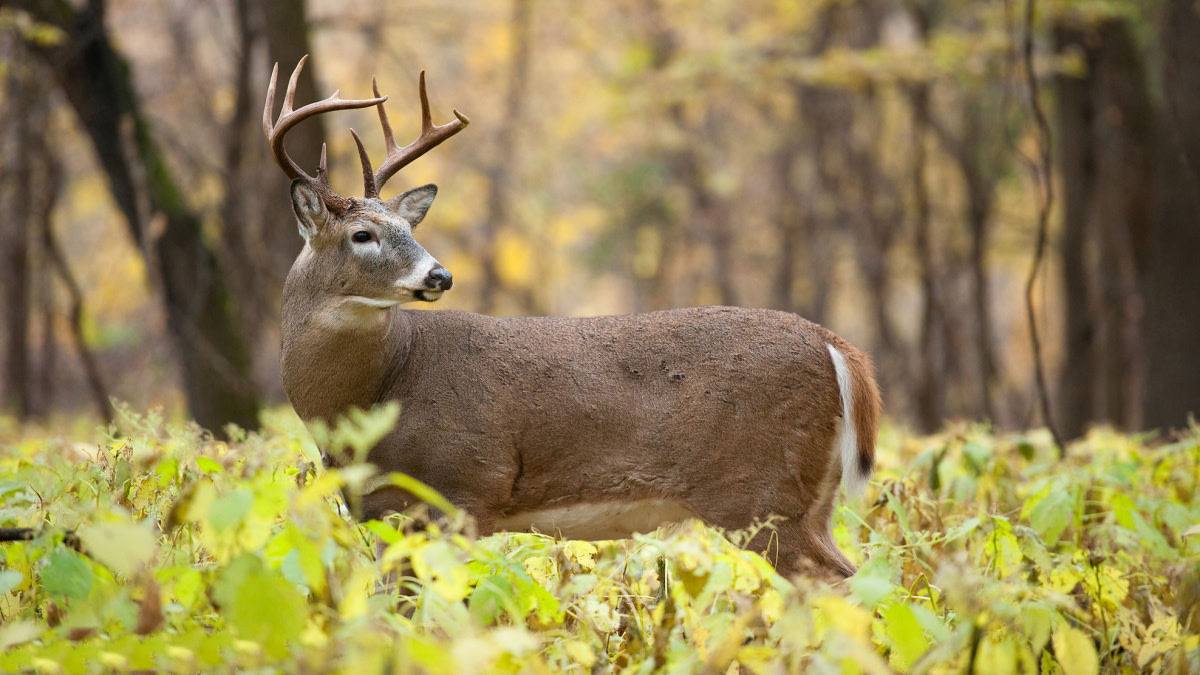
A few years ago, after giving a whitetail seminar at the Minnesota Deer Classic, I got into a conversation with one of the attendees. He mentioned that he hunted “up North” and that he just didn’t see very many deer. He then said something to the effect of, “I wish I could get one of those food plots to grow so I could kill them easier.”
He’s not alone in his thinking. That mindset regarding food plots is pervasive in the whitetail ranks. This image is partially grounded in reality and partially rooted in an amazing PR campaign. After all, good luck flipping on a hunting show about whitetails without seeing a carefully manicured clover plot or a two-acre patch of standing corn planted specifically for the hunt.
The important data missing from most of those episodes is that those properties would provide incredible deer hunting without a food plot. When you have huge tracts of ground to work with in proven whitetail states, that’s nearly a given.
But those shows have had a trickle-down effect in the hunting community for a long time. One result is that food plots have become standard practice for just about anyone with the ground and the means. Yet, many of those folks soon find out that the food plot juice isn’t always worth the squeeze.
The Work, The Reward
People often compare baiting to food plots, but dumping a pile of corn on the ground is a different beast than actually cultivating the earth and getting something to grow. The end result might look similar, but the process is different.
That process is also one of the most enjoyable parts of having food plots. It’s an excuse to do something with an end-goal, and it can be fun. It can also be a letdown, because even if you do manage to get something to grow, there is no guarantee that easy hunting will follow.
This is an unspoken truth about food plots. They don’t guarantee success, and they don’t make you a better hunter. They actually might make you worse.
No Escaping Gravity
Even if you only plant 1/16th of an acre in clover or oats for a little kill plot, you’re going to want to hunt it. You’re going to put a camera on it. You’re going to set up a blind, or a ladder stand next to it.
With each move, the gravity of the food plot grows a little stronger. The pull to go sit the familiar stand over the plot where you should see some deer is strong, and it can cause us to make dumb hunting decisions. On this note, I speak from experience.
I have a small kill plot on a property I own in Wisconsin, which has taken me years to develop. It’s a crappy little plot in a marginal deer area, but even so, I have a hard time not sitting it. It’s just so easy, and even though I know I could do some work for better chances at bigger deer, I often don’t.
This is one of the downsides to plots. If you have them, you’ll hunt them. Often, you’ll hunt them too much.
Browsers Basics
Whitetails have an incredible olfactory sense. It’s so well-developed that they can smell what types of plants offer them the best micronutrients. They use this to customize their diet to their needs at certain times of the year. There is a lesson in that, which says that during times of abundance, they know how to sort through their nutritional options.
In, September or October, they might stop by for a nibble on whatever is in your plot, or they might ignore it entirely for hard mast or some other food source. This might also coincide with their fifth encounter with a hunter on the plot in a few weeks, which can sour them further on the location. In other words, a food plot isn’t the excuse to not really hunt that many think it is.
This might be the main reason some consider food plots overrated. They allow us to believe the work is finished when it’s actually not. The work to get a plot going and churning out some deer-friendly calories might be in the rearview mirror, but that is by no means the end of the deal. Deer still want to survive, still usually have plenty of food options, and aren’t shy about ignoring a meal during the daylight hours when they could just slip in sometime after moonrise when it’s safer.
Conclusion
Plant them because it’s fun. Plant them because the process is rewarding, and food plots do offer plenty of critters an added buffet option. But don’t plant them solely because you think they’ll remedy all your deer hunting woes. They won’t, and they can actually make them worse—if you’re not careful.
Feature image via Matt Hansen.






